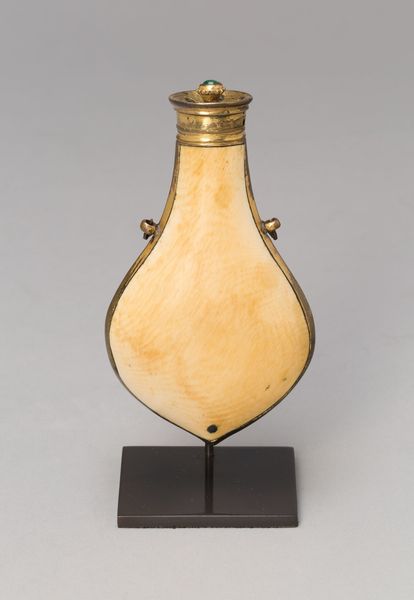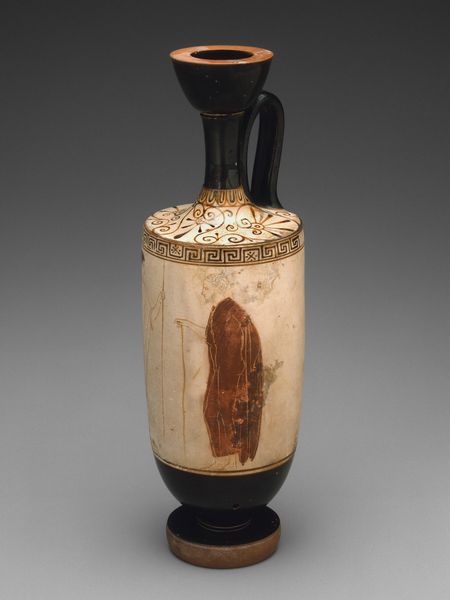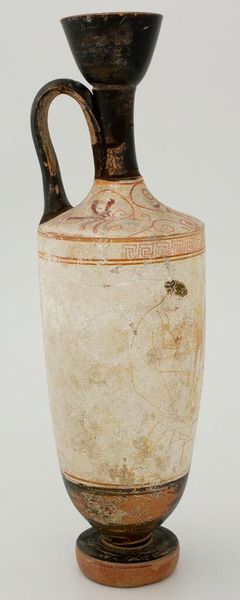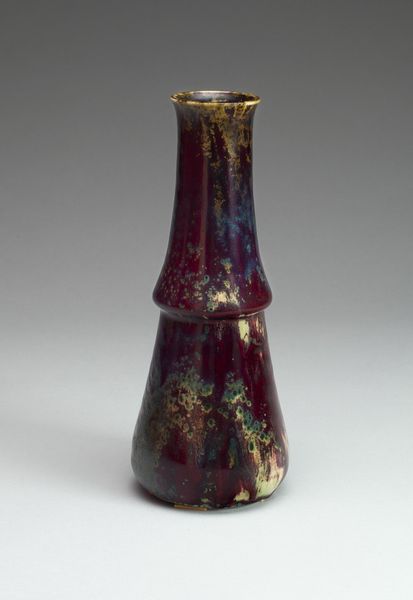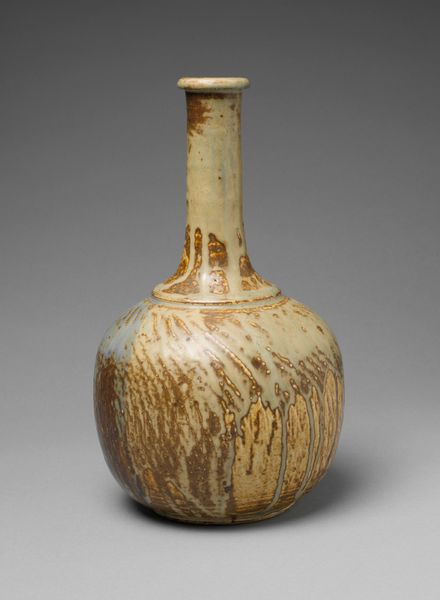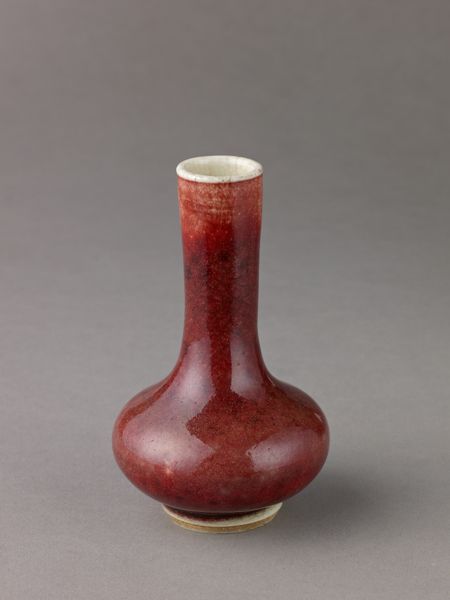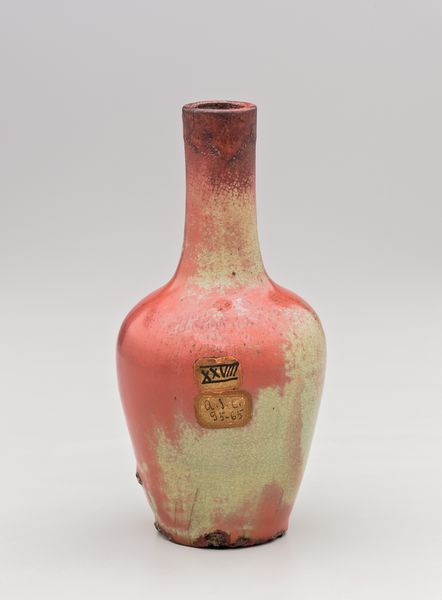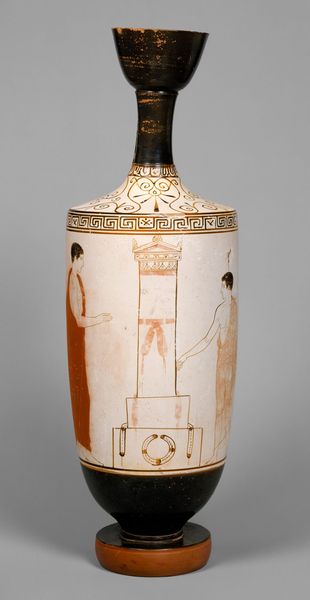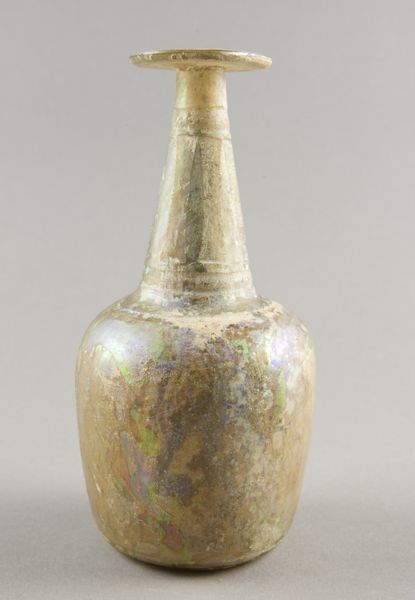
ceramic
#
narrative-art
#
greek-and-roman-art
#
ceramic
#
figuration
#
ancient-mediterranean
#
ceramic
Dimensions: 11 1/4 x 4 x 3 in. (28.58 x 10.16 x 7.62 cm)
Copyright: Public Domain
Editor: Here we have a lekythos, dating from around 450 BCE, attributed to The Carlsberg Painter. It’s made of ceramic, and seeing it here in the gallery, I'm struck by the subtlety of the figures against the white ground. The faded reddish-brown lines almost whisper a story. What do you see in this piece? Curator: I see echoes of ritual and memory. The lekythos itself, its very form, speaks to us of funerary rites. Oil vessels such as these were commonly placed in tombs as offerings to the deceased. Consider the imagery then, the figures enacting some unknown scene near what appears to be a... loom, perhaps? Editor: A loom, yes! That’s interesting. So the figures…are they weaving something significant? Curator: Maybe, or they could be adorning a funerary bier. The loom can act as a potent symbol. Are they creating a shroud? Cloth represented life in Ancient Greece. Now the lines are faded, but imagine them once bold, enacting a performance in memory of the deceased. What cultural memory do you suppose this painter tried to awaken? Editor: That’s a poignant thought – trying to capture a whole life through this scene. I never considered the loom's connection to fate. Perhaps this pot was meant to not only hold oil but to serve as a narrative itself, weaving the story of the deceased in subtle imagery for those visiting the tomb. Curator: Exactly! This is a shared cultural symbolism, a dialogue conducted in the language of images across time. I believe that seeing it this way brings us closer to understanding what the original audience may have been feeling.
Comments
No comments
Be the first to comment and join the conversation on the ultimate creative platform.

